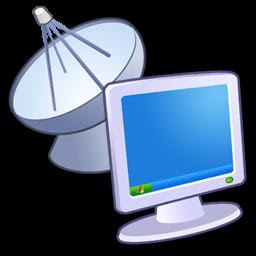Remote office access lets you log on to a computer or server from a separate location and use it as if you were actually on-site. Many businesses now rely on the ability to give employees remote office access, whether it's for mobile workers, as a response to the increased price of commuting or the need for flexible work schedules. There are two main categories of remote access: remote desktop connection and virtual private networks (VPN). Each one of these types of remote access has its own merits and even some challenges.
Remote Desktop Connection In simple terms, "remote desktop" refers to the ability to access your computer from another remote computer. You can either do this using Microsoft's Remote Desktop (a standard feature of Windows XP Professional that can connect you to another XP Professional machine), or through Web-based services such as GoToMyPC and LogMeIn, or you can use one of the most popular features of Microsoft Small Business Server, Remote Web Workplace, which provides free remote access to all designated employees via a secure web site. Remote desktop offers quick, easy and inexpensive access that, if set up correctly, requires nothing more than Internet service no matter where you are. The downside to using remote desktop is that only one person at a time can access the remote machine, and it requires someone who is tech savvy to complete the initial set up.
VPN (Virtual Private Network) A VPN emulates a direct, secure point-to-point connection, allowing data to be securely transmitted across unsecured public or private networks. Because a VPN is secure, it eliminates the need for pricey point-to-point options such as leased lines and dial-up connections. The remote office or computer naturally becomes part of the network. Additionally, a VPN allows for the sharing of network resources such as printers, servers, files and databases. On the minus side, a VPN can be difficult to set up and requires a high degree of technical skills in the area of public network security. Additional software for the VPN client must be installed on remote computers. Finally, the performance of some applications, such as QuickBooks, suffers over a VPN connection.
Source : goarticles by CMIT Solutions of Central Silicon Valley
How to Access Files at the Office
Subscribe to:
Post Comments (Atom)



0 comments:
Post a Comment